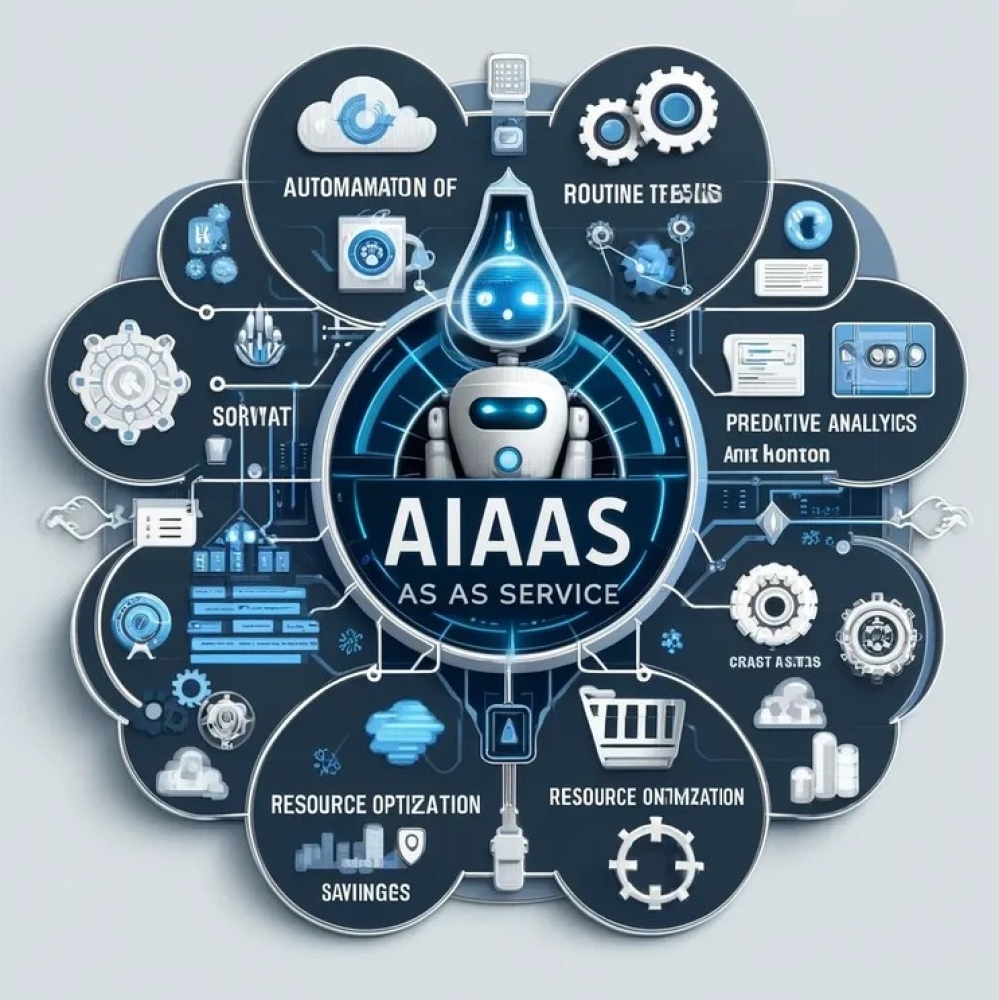loud technologies (Cloud Computing) are among the most commonly used technologies by companies and individual users today. The main advantage of this technology is that there is no need to purchase servers, software, or infrastructure—everything is provided “as a Service”.
The “As a Service” model provides users with the technological capabilities they need via the internet. This approach is both more cost-efficient and more flexible in usage.
The three most commonly used models are IaaS, PaaS, and SaaS. These models can be compared to ordering pizza in everyday life:
IaaS: You have the dough, sauce, and cheese, but you have to bake the pizza yourself.
PaaS: You are given a ready kitchen and oven; you just add the ingredients and bake the pizza.
SaaS: A ready-made pizza is delivered to your door; you just eat it.
Nowadays, a new Artificial Intelligence “As a Service” (AIaaS) model has entered the market.
What is AIaaS?
Artificial Intelligence as a Service (AIaaS) refers to delivering AI tools and services over the cloud. Users can leverage AI capabilities without having to build or manage the infrastructure themselves. Through AIaaS, companies and developers can apply technologies like machine learning, deep learning, natural language processing, and computer vision via APIs or other cloud-based services. This enables organizations to implement AI more affordably and accessibly.
How AIaaS Works
AIaaS follows a similar cloud service model as IaaS, PaaS, and SaaS. Users integrate these services into their applications via APIs.
Key Features:
Scalability: Resources can be increased or decreased based on user demand.
Data Processing: Supports storage and processing of large datasets for model training.
Pre-trained Models: Users can use pre-trained models for tasks like image recognition or language translation.
Customization: Companies can train their own models tailored to business needs.
Payment Model: Pay-as-you-go; no heavy upfront investment is required.
Types of AIaaS
Bots: Automated programs powered by NLP and ML. Examples: customer support chatbots, virtual assistants.
Machine Learning Frameworks: Provide infrastructure to build and deploy models without managing servers. Examples: predictive analytics, recommendation systems.
Cognitive APIs: Easily integrate capabilities such as speech recognition, language understanding, image processing, and decision-making into applications.
AI-powered Data Analytics: Analyze large datasets with ML for forecasting, anomaly detection, and pattern recognition.
Advantages of AIaaS
Cost-efficient: No need to set up infrastructure.
Access to latest technology: Provides state-of-the-art models and tools.
Faster development and deployment: Ready-to-use APIs and models reduce development time.
Scalability: Resources can scale according to demand.
Reliability: Continuous service provided via the cloud.
Focus on core business: Users can focus on business goals instead of managing AI infrastructure.
Data-driven decisions: AI analytics helps make more precise strategic decisions.
Enhanced customer experience: Chatbots and virtual assistants provide faster, better service.
Innovation: Companies can experiment with new AI solutions without significant resource expenditure.
Faster time-to-market: Reduces application development cycles.
Security and compliance: Ensures strong data protection and regulatory compliance.
Best Practices for AIaaS Implementation
Choose the right provider: Consider the types of services offered, scalability, pricing model, security, and integration capabilities.
Data quality: Ensure the training data is accurate, complete, and reliable.
Regulation and ethics: Consider data privacy, AI ethics, and transparent decision-making.
Integration process: Ensure compatibility with existing systems, use standard APIs, and conduct testing to minimize risks.












